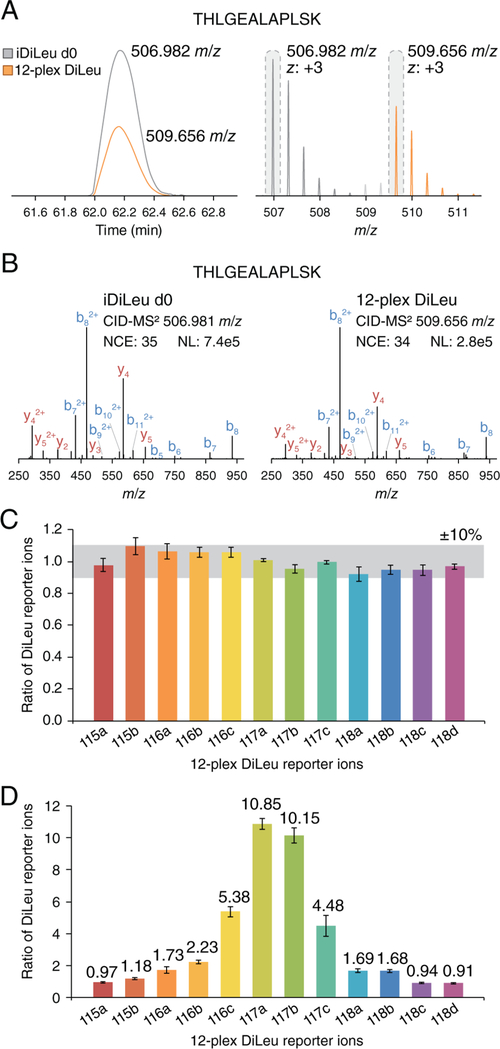Figure 2.
HOTMAQ feasibility in a combined interference model. Synthetic human peptide standards were spiked into the iDiLeu d0- and 12-plex DiLeu-labeled yeast tryptic peptides, which were combined at unity ratios. (A) iDiLeu d0 and 12-plex DiLeu-labeled peptides with the sequence THLGEALAPLSK coelute with an identical retention time of 62.2 min. The two precursor ion clusters (z, 3+) are separated by 2.67 m/z, as the peptide carries two tags at both N-terminal and lysine side chain. (B) An example of an iDiLeu d0-labeled peptide successfully triggering fragmentation of 12-plex DiLeu-labeled targeted peptides. 12-plex DiLeu-labeled peptide standards were combined at ratios of 1:1:1:1:1:1:1:1:1:1:1:1 (C) and 1:1:2:2:5:10:10:5:2:2:1:1 (D) (115a–118d). The average signal intensity of all the 12 channels was used for normalization in part C. The average signal intensity of 115a, 115b, 118c, and 118d at the unit ratio was used for normalization in part D. Error bars represent the standard deviations.

